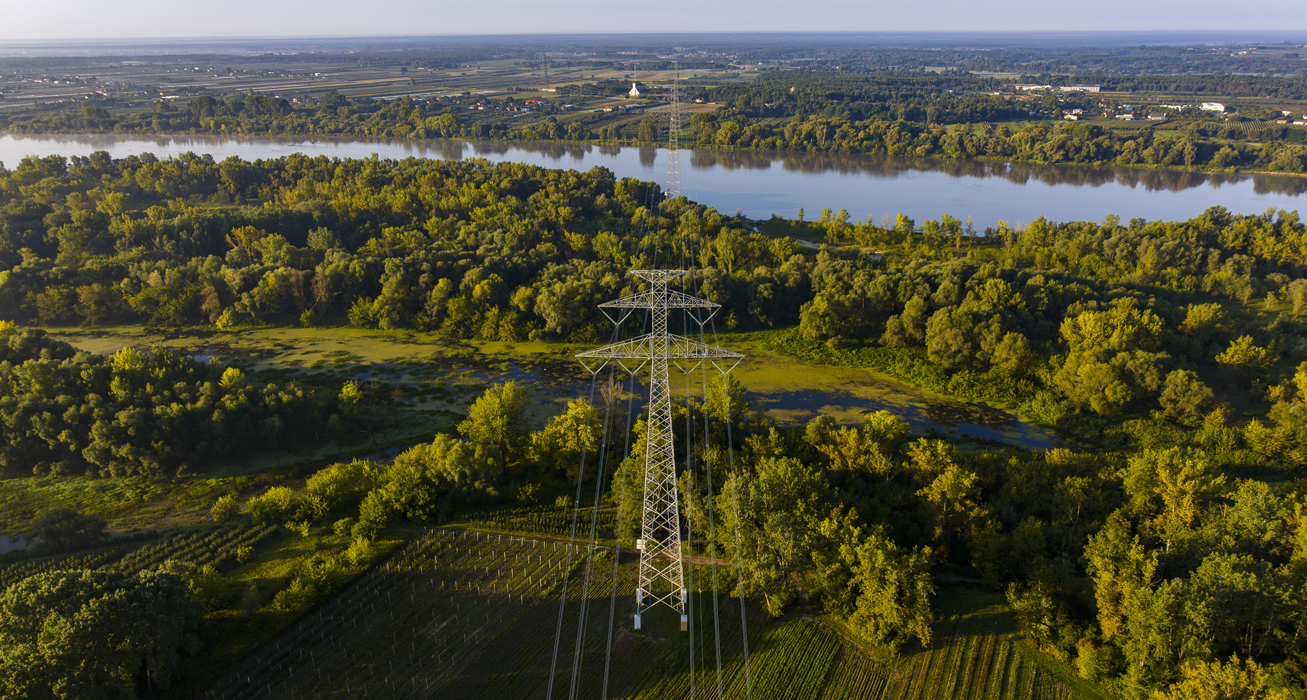Accounting principles
The key performance indicator for Turnover (KPI Turnover) was based on PSE’s financial statements for 2023 prepared in accordance with International Reporting Standards (IFRS). Net sales revenue from the above-mentioned statements was used as the denominator of the indicator.
Then, based on the provisions of Commission Delegated Regulation (EU) No. 2021/2139 of 4 June 2021, PSE analysed individual business segments, which were assigned to two categories:
- category I – bringing together the company’s areas of operation that are Taxonomy-eligible,
- category II – bringing together the company’s areas of operation that are Taxonomy non-eligible,
Due to the fact that PSE is a transmission system operator (TSO) – defined in the Energy Law – as an energy company engaged in the transmission of electricity, the Taxonomy-eligible areas include revenue as defined in the Electricity Tariff for 2023 for:
- electricity transmission services through the transmission grid (fixed and variable network fee),
- using the national power system (quality fee),
- settlements for electricity exchange between the national power system and the power systems of non-EU-member states (market fee),
- providing access to the national power system (transitional fee),
- ensuring the availability of electricity from renewable sources in the national power system (RES fee),
- ensuring the availability of electricity from high-efficiency cogeneration (cogeneration fee),
- remaining on standby to provide power to the power system and supplying such power to the system during periods of emergency (capacity fee),
- connection to the transmission grid (connection fee),
- revenues from the sale of electricity from the sale of electricity in the Balancing Market through physical delivery under power purchase agreements (PPAs) concluded by participants and real-time balancing of electricity demand with its output in the national power system (NPS),
- obtained under the inter-TSO compensation (ITC) mechanism,
- revenues derived from cross-border redispatching,
- allocating transmission capacity on synchronous interconnections (with Germany, the Czech Republic and Slovakia) and non-synchronous interconnections (with Sweden and Lithuania) and the interconnection with Ukraine.
PSE, as a transmission system operator, also conducts other activities, which are a marginal part of its business. It has adopted the materiality principle, according to which events occurring in the enterprise that do not significantly affect the asset and financial position of the entity will not be included in the Taxonomy. A percentage indicator was used to determine the materiality threshold. The determination of the materiality threshold percentage is based on the volume of total sales revenue. The materiality threshold was set at over 1 percent of the company’s total revenue. Revenue from other activities amounted to 0.15 percent of total revenue, so it was included in Category II, which comprises the company’s areas of operation that are Taxonomy non-eligible.
Based on the assessment of compliance with EU Regulation 2020/852 described below, revenue from taxonomy-eligible activities were identified.
Information on the assessment of compliance with Regulation (EU) 2020/852
The various revenue categories of PSE were analysed for Taxonomy eligibility. The process included an analysis of Taxonomy-eligible activities as defined in EU Regulation 2021/2139 and EU Regulation 2022/1214. Based on the analysis, one Taxonomy-eligible activity was identified:
|
CCM 4.9.
|
Transmission and distribution of electricity
|
The activity mentioned above has been analysed with reference to the technical criteria set for this activity in EU Regulation 2021/2139. The analysis was carried out by a project team that included representatives from each unit. The requirements of the individual technical criteria were consulted and confirmed with staff in the respective units with the appropriate knowledge to confirm whether the technical criterion concerned was met.
PSE is part of the European energy system and therefore it meets criterion 1.a) “ the system is the interconnected European system, i.e. the interconnected control areas of Member States, Norway, Switzerland and the United Kingdom, and its subordinated systems”.
According to the technical screening criteria, “Infrastructure dedicated to creating a direct connection or expanding an existing direct connection between a substation or network and a power production plant that is more greenhouse gas intensive than 100 g CO2e/kWh measured on a life cycle basis is not compliant”. As part of compliance assessment, it was assumed that the Polish and European energy systems are on a decarbonisation path, so no new connections with power plants generating energy from carbon-intensive sources are being created or expanded. At the same time, due to the fact that the existing connection infrastructure was not created separately for high-carbon and low- or zero-carbon sources, it is not possible to separately determine within the existing infrastructure to what extent it meets the cited exemption criterion. Therefore, based on the direction of energy development towards zero-carbon energy indicated above, it was assumed that 100% of the infrastructure intended for the creation of a direct connection is compliant.
Consequently, 100% of the revenue associated with CCM 4.9 Transmission and distribution of electricity was assessed as Taxonomy-aligned.
Contribution to multiple objectives, disaggregation of KPIs
Not applicable. Turnover from activities contributing to more than one environmental objective was not identified. The key performance indicator was not disaggregated.


